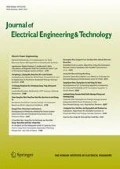Abstract
We address the identification and generation of the discrete-time chaotic system (DTCS) with a two-layered recurrent neural network (RNN). First, we propose an identification procedure of the DTCS in which the RNN is required to have less layers than in the conventional procedures. Next, based on Li–Yorke theorem, we propose a generation procedure which enables us to predict a range of chaotic behavior of the DTCS in advance. Simulation results demonstrate that the proposed identification procedure, employing the Levenberg–Marquardt algorithm and a two-layered RNN, requires lower computational complexity than the conventional identification procedures at comparable performance.



Similar content being viewed by others
References
Yi Z, Tan KK (2004) Multistability of discrete-time recurrent neural networks with unsaturating piecewise linear activation functions. IEEE Trans Neural Netw 15(2):329–336
Khansari-Zadeh S-M, Billard A (2012) A dynamical system approach to realtime obstacle avoidance. Auton Robots 32(4):433–454
Li Y, Huang X, Guo M (2013) The generation, analysis, and circuit implementation of a new memristor based chaotic system. Math Probl Eng 1:398306-1–398306-8
Gotoda H, Shinoda Y, Kobayashi M, Okuno Y, Tachibana S (2014) Detection and control of combustion instability based on the concept of dynamical system theory. Phys Rev 82(2):022910
Alombah NH, Fotsin H, Ngouonkadi EBM, Nguazon T (2016) Dynamics, analysis and implementation of a multiscroll memristor-based chaotic circuit. Int J Bif Chaos 26(8):1650128-1–1650128-20
Li T-Y, Yorke A (1975) Period three implies chaos. Amer. Math. Monthly 82(10):985–992
Casdagli M (1989) Nonlinear prediction of chaotic time series. Phys D Nonlinear Phen 35(3):335–356
Cook ER, Kairiukstis LA (1990) Methods of dendrochronology: applications in the environmental science. Kluwer, Norwell
Moskalenko OI, Koronovskii AA, Hramov AE (2010) Generalized synchronization of chaos for secure communication: remarkable stability to noise. Phys Lett A 374(29):2925–2931
Zounemat-Kermani M, Kisi O (2015) Time series analysis on marine wind-wave characteristics using chaos theory. Ocean Eng 100:46–53
Ghanem R, Romeo F (2001) A wavelet-based approach for model and parameter identification of non-linear systems. Int J Non-Linear Mech 36(5):835–859
Bodyanskiy Y, Vynokurova O (2013) Hybrid adaptive wavelet-neuro-fuzzy system for chaotic time series identification. Inf Sci 220:170–179
Lee C-H, Teng C-C (2000) Identification and control of dynamic systems using recurrent fuzzy neural networks. IEEE Trans Fuzzy Syst 8(4):349–366
Won SH, Song I, Lee SY, Park CH (2010) Identification of finite state automata with a class of recurrent neural networks. IEEE Trans Neural Netw 21(9):1408–1421
Dong L, Wei F, Xu K, Liu S, Zhou M (2016) Adaptive multi-compositionality for recursive neural network models. IEEE/ACM Tr. Audio Speech Lang Process 24(3):422–431
Su B, Lu S (2017) Accurate recognition of words in scenes without character segmentation using recurrent neural network. Pattern Recogn 63:397–405
Cannas B, Cincotti S, Marchesi M, Pilo F (2001) Learning of Chua’s circuit attractors by locally recurrent neural networks. Chaos Solitons Fractals 12(11):2109–2115
Pan S-T, Lai C-C (2008) Identification of chaotic systems by neural network with hybrid learning algorithm. Chaos Solitons Fractals 37(1):233–244
Mirzaee H (2009) Long-term prediction of chaotic time series with multi-step prediction horizons by a neural network with Levenberg-Marquardt learning algorithm. Chaos Solitons Fractals 41(4):1975–1979
Ko C-N (2012) Identification of chaotic system using fuzzy neural networks with time-varying learning algorithm. Int J Fuzzy Syst 14(4):540–548
Lin Y-Y, Chang J-Y, Lin C-T (2013) Identification and prediction of dynamic systems using an interactively recurrent self-evolving fuzzy neural network. IEEE Trans Neural Netw Learn Syst 24(2):310–321
Oliver N, Soriano M-C, Sukow D-W, Fischer I (2013) Fast random bit generation using a chaotic laser: approaching the information theoretic limit. IEEE J Quantum Electron 49(11):910–918
Hornik K, Stinchcombe M, White H (1989) Multilayer feedforward networks are universal approximators. Neural Netw 2(5):359–366
Lera G, Pinzolas M (2002) Neighborhood based Levenberg–Marquardt algorithm for neural network training. IEEE Trans Neural Netw 13(5):1200–1203
Acknowledgements
This work was supported by the National Research Foundation of Korea under Grant NRF-2018R1A2A1A05023192, for which the authors wish to express their appreciation. The authors would also like to thank the Associate Editor and two anonymous reviewers for their constructive suggestions and helpful comments.
Author information
Authors and Affiliations
Corresponding author
Additional information
Publisher's Note
Springer Nature remains neutral with regard to jurisdictional claims in published maps and institutional affiliations.
Rights and permissions
About this article
Cite this article
Lee, S., Won, S., Song, I. et al. On the Identification and Generation of Discrete-Time Chaotic Systems with Recurrent Neural Networks. J. Electr. Eng. Technol. 14, 1699–1706 (2019). https://doi.org/10.1007/s42835-019-00103-2
Received:
Revised:
Accepted:
Published:
Issue Date:
DOI: https://doi.org/10.1007/s42835-019-00103-2




